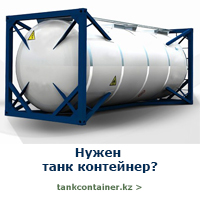@woodrowusher
Профиль
Регистрация: 5 месяцев, 3 недели назад
Mastering Metric to Imperial Conversions: A Complete Guide
Whether or not you’re planning a visit to the United States, working on a DIY project, or simply attempting to understand a recipe, likelihood is you will must navigate between the metric and imperial systems. While the metric system is used globally in most nations, the imperial system is still prevalent within the United States and some other places. This can lead to confusion when attempting to convert units of measurement between these two systems. In this guide, we’ll break down the process, making it simpler so that you can master metric to imperial conversions.
Understanding the Two Systems
The metric system, developed within the late 18th century, relies on units of ten, making it intuitive and simple to scale measurements. The fundamental units embody the meter (for length), the liter (for volume), and the gram (for mass). Prefixes such as milli-, centi-, and kilo- point out fractional or multiple quantities. For instance, a kilometer is 1,000 meters, and a millimeter is 1/1,000 of a meter.
In contrast, the imperial system uses quite a lot of units that aren't as straightforward. For length, you might encounter inches, ft, yards, and miles. For weight, kilos and ounces are used, while quantity could also be expressed in gallons, quarts, pints, or cups. Since these units should not based mostly on multiples of ten, converting between them and the metric system can seem more complicated. But with just a few easy formulas, the process becomes manageable.
Key Conversions
Right here’s a look at some of the most typical conversions between the metric and imperial systems:
Size
- 1 inch = 2.54 centimeters
To convert inches to centimeters, multiply by 2.54. Conversely, divide centimeters by 2.fifty four to convert to inches.
_Example: To convert 10 inches to centimeters, you'll multiply 10 by 2.54, resulting in 25.4 cm._
- 1 foot = 0.3048 meters
To convert ft to meters, multiply by 0.3048. To go from meters to feet, divide by 0.3048.
_Example: 6 toes equals 6 x 0.3048 = 1.8288 meters._
- 1 mile = 1.60934 kilometers
Miles are commonly used for longer distances, particularly in the U.S. To transform miles to kilometers, multiply by 1.60934. For the reverse conversion, divide kilometers by 1.60934.
_Example: 5 miles is approximately 8.05 kilometers (5 x 1.60934)._
Weight
- 1 pound = 0.453592 kilograms
To convert kilos to kilograms, multiply by 0.453592. If you should go from kilograms to pounds, divide by 0.453592.
_Example: a hundred and fifty pounds is about 68.04 kilograms (a hundred and fifty x 0.453592)._
- 1 ounce = 28.3495 grams
When converting ounces to grams, multiply by 28.3495. For grams to ounces, divide by 28.3495.
_Example: 16 ounces is approximately 453.6 grams._
Quantity
- 1 gallon (U.S.) = 3.78541 liters
In the U.S., gallons are commonly used for liquid measurements like gasoline. To convert gallons to liters, multiply by 3.78541. To go the opposite way, divide liters by 3.78541.
_Example: A 10-gallon tank would hold about 37.85 liters._
- 1 quart (U.S.) = 0.946353 liters
For smaller volumes, you might encounter quarts. To convert quarts to liters, multiply by 0.946353. Conversely, divide liters by 0.946353 for the reverse conversion.
_Example: four quarts is roughly 3.79 liters._
Sensible Applications
1. Traveling and Driving: In case you're touring between international locations that use different systems, comparable to driving in the U.S. however coming from Europe, you will notice road signs displaying distances in miles, speed limits in miles per hour, and fuel sold in gallons. Having a primary understanding of the way to convert between these units may help avoid confusion on the road.
2. Recipes and Cooking: A standard challenge when following recipes from other international locations is the distinction in measurement units. For example, many European recipes use grams, milliliters, and Celsius, while American recipes use cups, ounces, and Fahrenheit. A handy conversion chart might be your finest friend within the kitchen.
3. Home Improvement and Development: In many development and residential improvement projects, especially should you're using tools or provides from totally different parts of the world, understanding both systems of measurement is essential. For example, building materials within the U.S. could be sold in toes and inches, while it's possible you'll be familiar with utilizing meters and centimeters.
4. Science and Schooling: In fields like science and medicine, where the metric system is nearly universally adopted, changing measurements to the imperial system is usually necessary when dealing with older equipment or data from the U.S.
Useful Tips for Quick Conversions
- Memorize key conversions. Knowing that 1 inch is 2.fifty four centimeters or that 1 kilogram is 2.20462 kilos can assist you make quick mental calculations without always needing a calculator.
- Use a conversion app or calculator. If you're regularly changing between the 2 systems, consider downloading an app that simplifies the process.
- Keep a reference chart. A quick-reference chart with common conversions will be an invaluable tool, particularly for those who're working on a project or following a recipe.
Conclusion
Mastering metric to imperial conversions may seem daunting at first, however once you become familiar with a number of key formulas and ideas, it becomes quite a bit easier. Whether you're cooking, traveling, or tackling a home improvement project, having a superb grasp of each measurement systems will make your life easier and more efficient.
If you treasured this article so you would like to collect more info relating to metric to imperial conversion nicely visit the website.
Сайт: https://centimeters.to/
Форумы
Тем начато: 0
Ответов написано: 0
Роль форума: Участник


